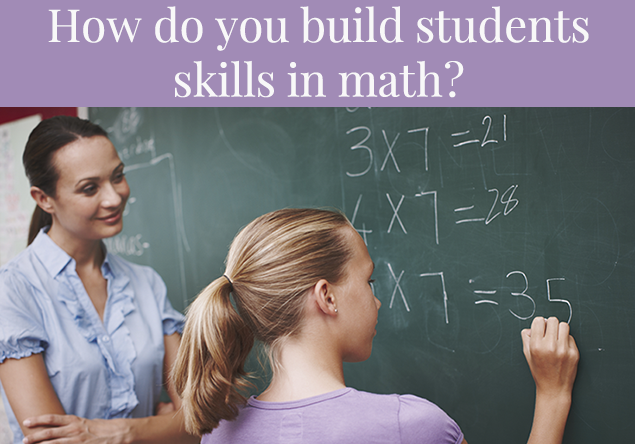BUSTED! 3 Popular Math Myths
Posted by Network Support · Leave a Comment
Being good at math is not about natural ability, it’s all about effort.
For many people, working with numbers can be stressful. However, when people are confident in their ability to understand and solve mathematical problems, the world becomes an easier place to navigate. Tasks such as budgeting, choosing the best insurance plan, or even building a tree house from scratch all become manageable. Having the ability to analyze, reason and solve math problems also opens up career opportunities in nearly every major field. Hence, if we want our students to develop skills to be successful in life, they need to know and be confident about math skills. Moreover, performance in mathematics courses is often undermined by faulty beliefs regarding the subject and one’s own abilities. These myths hamper both, effort and self-confidence. We need to remind our students that being good at math is not about natural ability, it’s all about effort.
Myth: Learning mathematics means mastering an absolute set of basic skills.
Reality: Skills are to mathematics what scales are to music or spelling is to writing. The objective of learning is to write, to play music, or to solve problems – not just to master skills.
Ask any student to explain what they think math is and they will tell you that it’s about numbers. And when asked why we learn math, students usually indicate it’s because we need to know how many cookies everyone will get.
And it’s true. Knowing how many cookies everyone ends up with is important. But wouldn’t it be exciting to hear a group of students say that we learn math so we can build a pen for our new rabbit or design a stylish backpack or even figure out how long it would take to fly to the moon! And if students believed that that’s what math was all about, they would definitely find it enjoyable.
As teachers, we may tend to describe math as a subject that requires memorization of rules and procedures. We may limit it to turning pages in a textbook and completing exercises on worksheets. As a result, there is very little discussion, creativity, or real-life problem-solving involved in the math class. For these reasons, math is, understandably misunderstood.
More than any other subject, math can evoke negative emotions even in the very teachers who are assigned to teach it. Since a child’s first introduction to formal math education takes place in the elementary grades, it’s especially important for elementary teachers to reflect on their feelings toward math. Middle school and high school teachers may encounter these issues when they implement an integrated models of education like STEM. In addition, we all need to be careful about possible biases we have toward math that often have no basis.
Myth: Someone either has the math gene or hasn’t.
Reality: We all have the ability to learn math. Just because someone may be gifted at mathematics, does not mean that the ability to learn math is limited to those gifted in it. Just like we all have the ability to learn to write or play soccer, we also have the ability to learn math. Even though we know that we’re probably not going to be the next J.K. Rowling or David Beckham, we learn to overcome the difficult parts of editing or learning to pass a ball.
So why then do we not make an effort in learning math? We do it because math is hard. It requires a type of thinking which is not usually associated with other subject areas and we often find ourselves struggling to make sense of it.
But, as we struggle, we learn. Learning requires persistence. Though developing persistence takes time, it’s worth the effort. When students experience success through such determination, they learn that their progress is due to hard work, not a math gene.
Myth: Boys are better at math than Girls.
Reality: This belief stems from the cultural bias we have toward math being a male subject. History has shown the role of women to be limited to the house while men were free to pursue careers of their choice. This has led us to believe that boys and men have greater ability to problem solve than girls and women. A good example of this early conditioning can be seen in a study which found that mothers spoke about number concepts twice as often to their toddler boys than to their toddler girls. These early experiences with number talk can influence the understanding of basic mathematical concepts, giving boys an advantage in developing confidence in math.
Another way that boys are groomed mathematically is through the toys they play with at a young age. Boys have more experiences with blocks, legos and erector sets which help build spatial skills, skills that are correlated with mathematical achievement. But it has been found that spatial skills are not inborn and with training, girls perform just as well as boys.
As teachers, we are in a unique position to positively influence girls’ attitudes toward math. We can actively counter beliefs and biases that girls aren’t as good as boys in math. We can expose girls to successful female role models who can impact their interest and performance in mathematics. And we can let girls know that they have the right to perform well in math because they can. When we do these things, girls will begin to see themselves as equal to boys in math because they are.
Like this article for teachers?
Browse the Professional Learning Board COURSE CATALOG to find related online courses for teachers in your state. Professional Learning Board is a leading provider of online professional development classes that teachers use to renew a teaching license or renew a teaching certificate.





